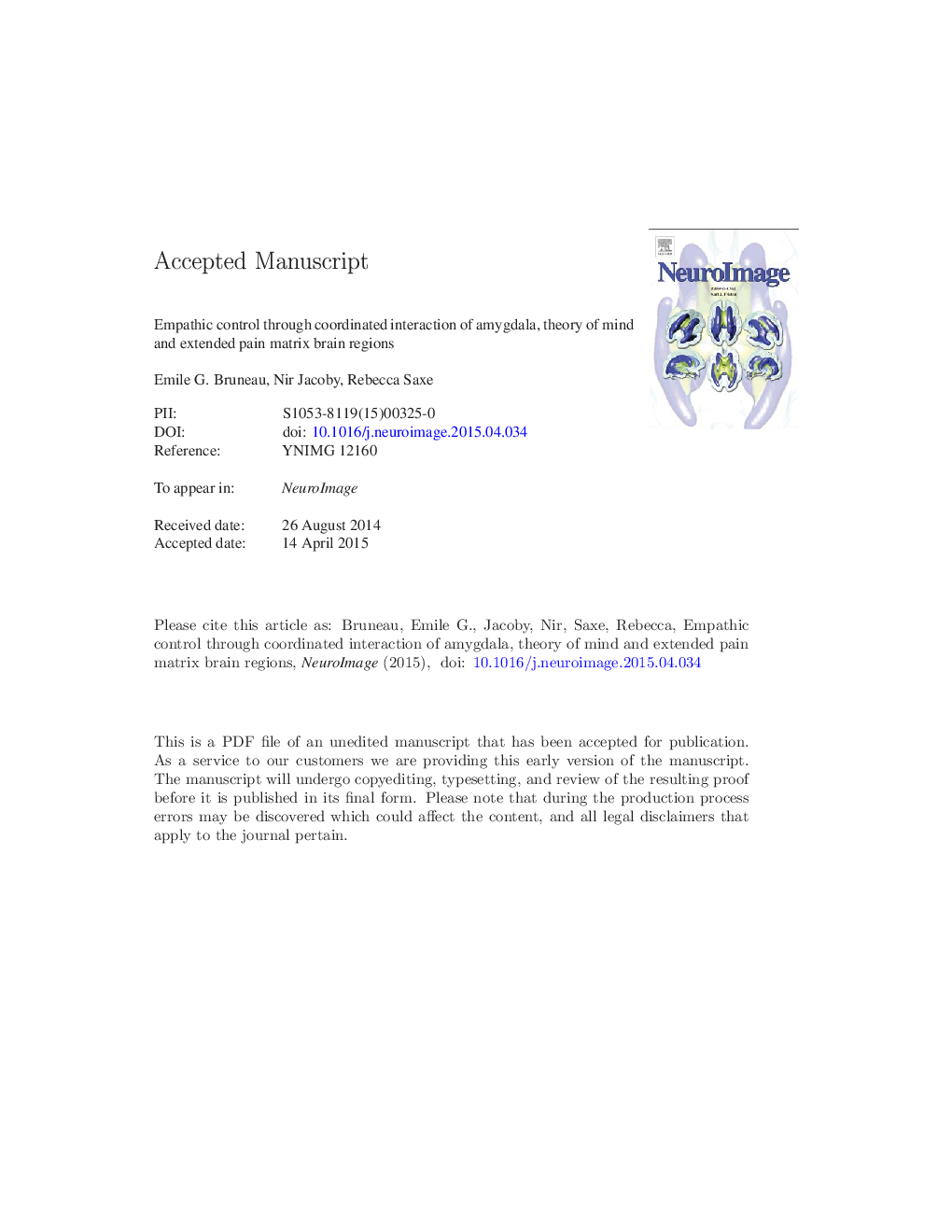| Article ID | Journal | Published Year | Pages | File Type |
|---|---|---|---|---|
| 6025343 | NeuroImage | 2015 | 51 Pages |
Abstract
Brain regions in the “pain matrix”, can be activated by observing or reading about others in physical pain. In previous research, we found that reading stories about others' emotional suffering, by contrast, recruits a different group of brain regions mostly associated with thinking about others' minds. In the current study, we examined the neural circuits responsible for deliberately regulating empathic responses to others' pain and suffering. In Study 1, a sample of college-aged participants (n = 18) read stories about physically painful and emotionally distressing events during functional magnetic resonance imaging (fMRI), while either actively empathizing with the main character or trying to remain objective. In Study 2, the same experiment was performed with professional social workers, who are chronically exposed to human suffering (n = 21). Across both studies activity in the amygdala was associated with empathic regulation towards others' emotional pain, but not their physical pain. In addition, psychophysiological interaction (PPI) analysis and Granger causal modeling (GCM) showed that amygdala activity while reading about others' emotional pain was preceded by and positively coupled with activity in the theory of mind brain regions, and followed by and negatively coupled with activity in regions associated with physical pain and bodily sensations. Previous work has shown that the amygdala is critically involved in the deliberate control of self-focused distress - the current results extend the central importance of amygdala activity to the control of other-focused empathy, but only when considering others' emotional pain.
Keywords
Related Topics
Life Sciences
Neuroscience
Cognitive Neuroscience
Authors
Emile G. Bruneau, Nir Jacoby, Rebecca Saxe,
